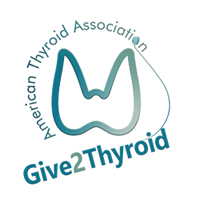ABBREVIATIONS & DEFINITIONS
 Papillary thyroid cancer: the most common type of thyroid cancer. There are 4 variants of papillary thyroid cancer: classic, follicular, tall-cell and noninvasive follicular thyroid neoplasm with papillary-like nuclear features (NIFTP).
Papillary thyroid cancer: the most common type of thyroid cancer. There are 4 variants of papillary thyroid cancer: classic, follicular, tall-cell and noninvasive follicular thyroid neoplasm with papillary-like nuclear features (NIFTP).
Cancer recurrence: this occurs when the cancer comes back after an initial treatment that was successful in destroying all detectable cancer at some point.
Recurrent laryngeal nerve: branch of the vagus nerve that supplies the muscles of the larynx, including the vocal cords. Injury of this nerve during thyroid surgery can result in hoarseness, loss of voice and breathing difficulty.
Hypoparathyroidism: low calcium levels due to decreased secretion of parathyroid hormone (PTH) from the parathyroid glands located next to the thyroid. This can occur as a result of damage to the glands during thyroid surgery and usually resolves.
Cancer metastasis: spread of the cancer from the initial organ where it developed to other organs, such as the lungs and bone.
Lymph node (LN): bean-shaped organ that plays a role in removing what the body considers harmful, such as infections and cancer cells.
Lateral neck LN dissection: careful removal of all lymph nodes in the lateral compartment of the neck (lateral to the carotid arteries) in which cancer cells may have migrated.
Total thyroidectomy: surgery to remove the entire thyroid gland.
Radioactive iodine (RAI): this plays a valuable role in diagnosing and treating thyroid problems since it is taken up only by the thyroid gland. I-131 is the destructive form used to destroy thyroid tissue in the treatment of thyroid cancer and with an overactive thyroid.
Thyroglobulin: a protein made only by thyroid cells, both normal and cancerous. When all normal thyroid tissue is destroyed after radioactive iodine therapy in patients with thyroid cancer, thyroglobulin can be used as a thyroid cancer marker.




